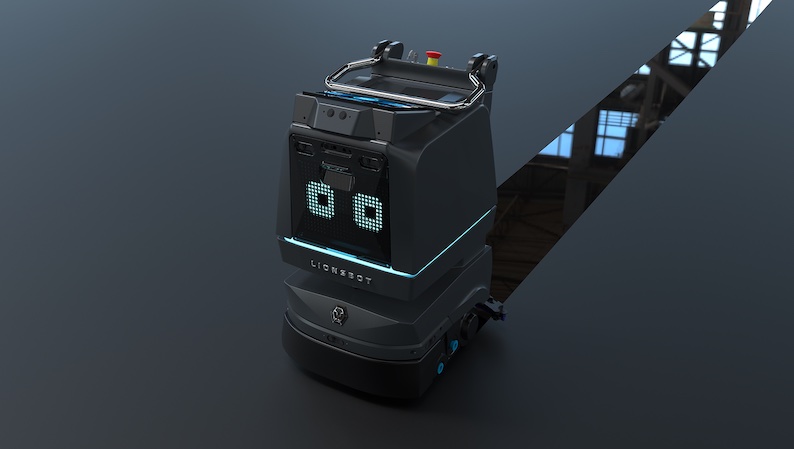FM companies, and the like, must devise better solutions to these more rigorous standards, high staff turnover and shortages, but what are the realistic options?
Cobotics (collaborative robotics) in cleaning have been more prevalent over the past year or two than ever before. And where there seemed to be a fear of robots taking human jobs, we actually see benefits over the longer term. By no means do we want to replace that human element in cleaning, as there is still so much robotics can't do, but we want to help reduce mundane, repetitive tasks which take up so much time.
Alleviating the laborious nature of vacuuming, mopping and scrubbing means operatives can hit their daily targets of deep cleaning, touch-point cleaning and sanitising, all while monitoring a fleet of cobots. As technology and features improve, and ROI is possible in as little as 18 months, having a robotic team member looks more attainable as pressures grow.
So what are the options on the market? The most prominent brand in the UK is Lionsbot, producing a line of high-quality, easy-to-use automated cleaning robots. Lionsbots' newly launched R3 Scrub at Interclean in Amsterdam has increased interest in cobotics since its arrival in May 2022.
A large FM company has already deployed R3s within healthcare centres and corporate offices. As a more compact version of the LeoBot, the R3 is super quiet and super efficient, scrubbing up to 1200 square metres per hour. It's also perfect for dust mopping and can diligently clean 1800 square metres per hour. Controlled manually or through the app, an operative or manager can monitor and command each machine remotely.
Additionally, the R3s low water usage at just 6l per hour means there is no overuse of water. With the UK seeing massive droughts this year which are expected to last well into 2023, it's a resource we need to save. Reservoirs across the country continue to be at lower levels than usual. Nearly half of reservoirs were classed as exceptionally low for the time of year, with total stocks at 52% of total capacity on 20 September.
Hospitals across the UK have widely adopted LeoBots into their cleaning regiments, and there are currently 25 deployed in a healthcare setting. The LeoBots fall into Lionsbot's mid-sized range of cobotic machines and have been delighting patients young and old with their personalities. But on a serious note, the LeoBots allow operatives more time to handle touch-point cleaning and cross-infection control, with the cobots dealing with large open areas such as corridors.
Certainly, your biggest option in automation is the Rex. This monster machine comes equipped with 200m Lidar coverage, 10-hours runtime, 81cm cleaning width and up to 80kg of brush pressure. Rex can conservatively clean 1700 square meters per hour and has been installed in two major logistics and distribution sites and a prominent London-based airport. The scale and nimbleness at which Rex can clean is truly a sight to behold.
On a smaller scale, robotic disc vacuums are becoming commonplace not only domestically but within commercial settings. Travelodge, one of the largest hotel chains in the UK, completed a rollout to all 579 of their hotels, of 7,500 robotic vacuums, between July and September 2021, to clean 44,000 rooms daily. As it stands, this is one of the largest mobilisations of automated cleaning equipment the UK has seen.
Travelodges' decision to introduce robotics was driven by the need to relieve its housekeeping staff of very time-consuming work and improve its sustainability as a company. Each RoboVac uses 600 watts of power compared with 1,200 watts for a traditional vacuum cleaner and are bagless. The simple change cuts down on waste, and staff love them—it is seen as a win-win solution for more efficient cleaning while supporting the sustainability of our planet.
The future of cobotic cleaning looks very bright, and with good reason. Some of the biggest companies in the UK, in both the Public and Private sectors, are embracing cobotics to solve problems. Whether you are facing staffing issues, want to improve health, need to streamline costs or focus on sustainability, cleaning automation is proven to work—integration is not only possible but viable.









 Cleaning standards and expectations have changed since the Pandemic. We rely on cleaning operatives to keep spaces clean so that we can stay healthier. Although our standards have changed, staffing levels have not, with a severe downturn in availability since Brexit. It's an ongoing topic of conversation and one that doesn't seem to be changing anytime soon.
Cleaning standards and expectations have changed since the Pandemic. We rely on cleaning operatives to keep spaces clean so that we can stay healthier. Although our standards have changed, staffing levels have not, with a severe downturn in availability since Brexit. It's an ongoing topic of conversation and one that doesn't seem to be changing anytime soon.